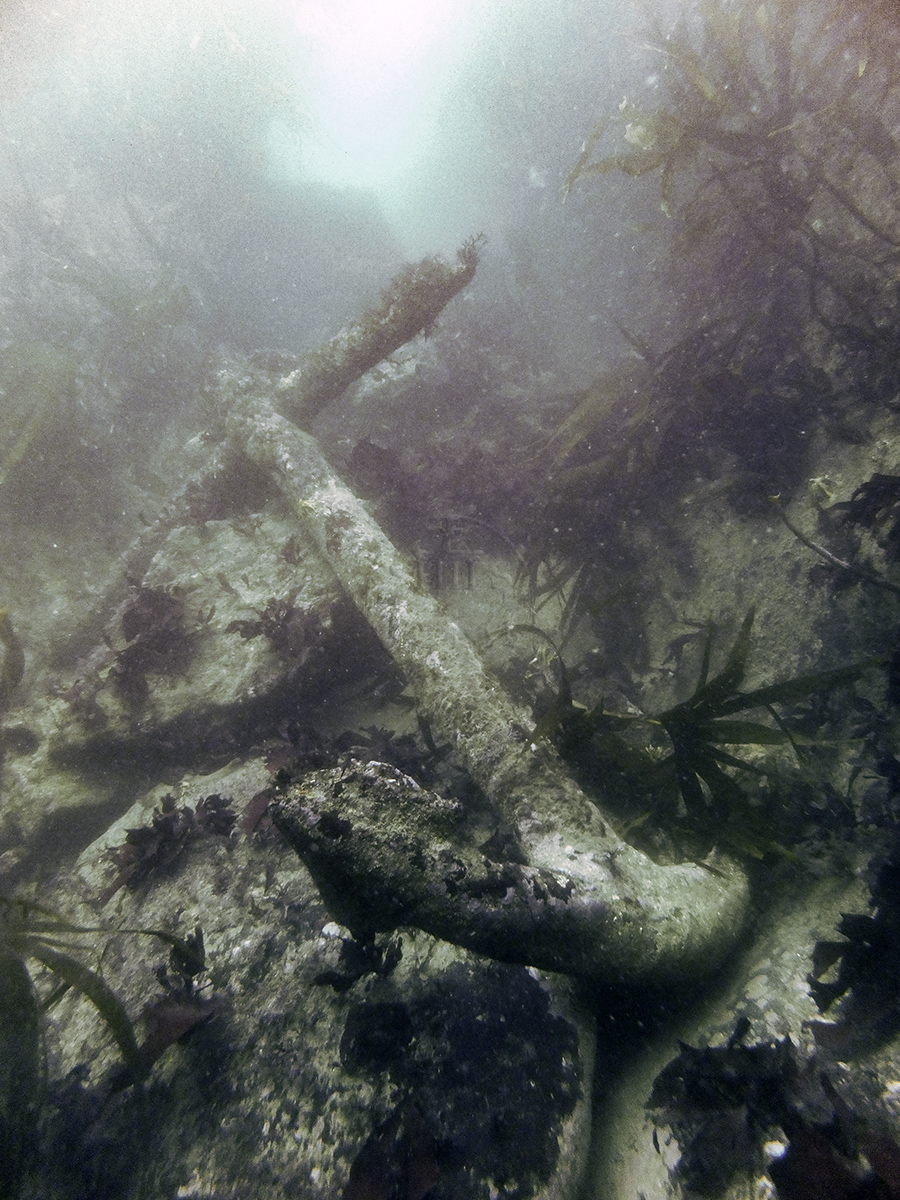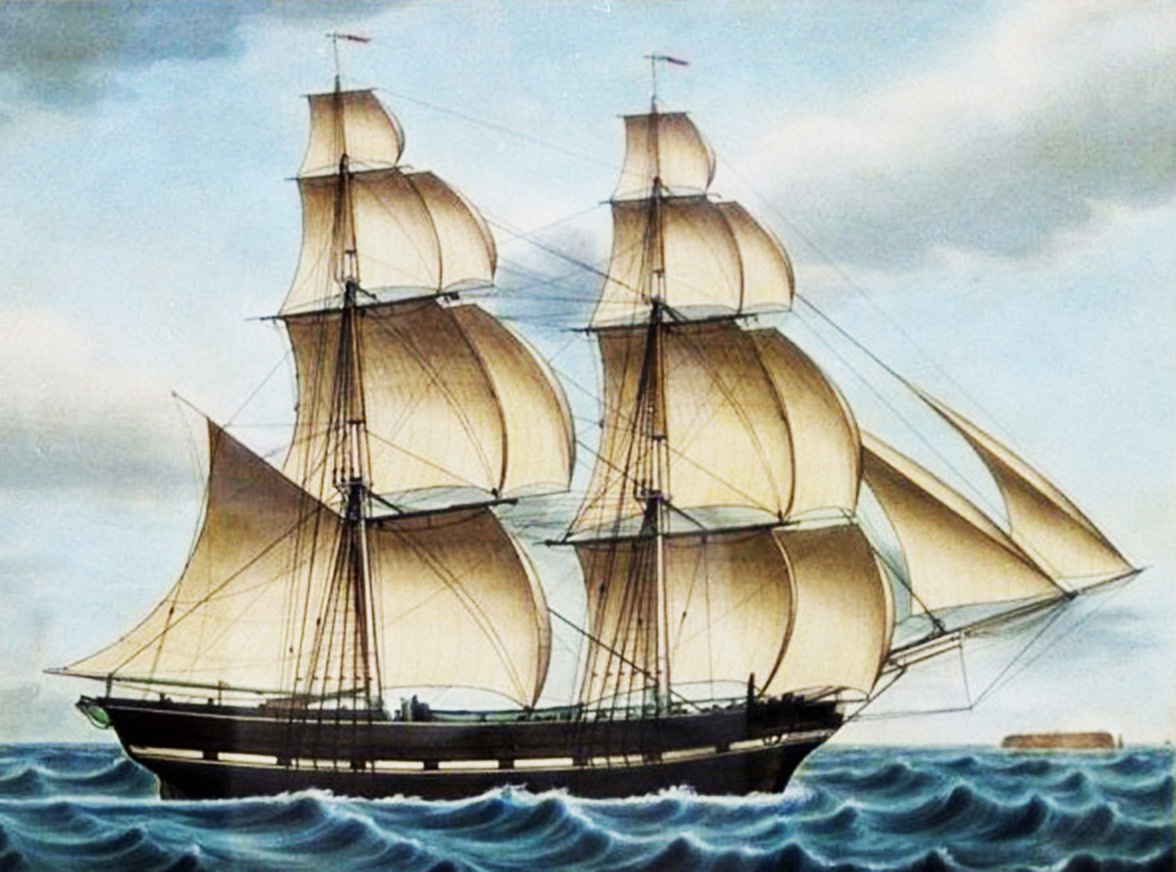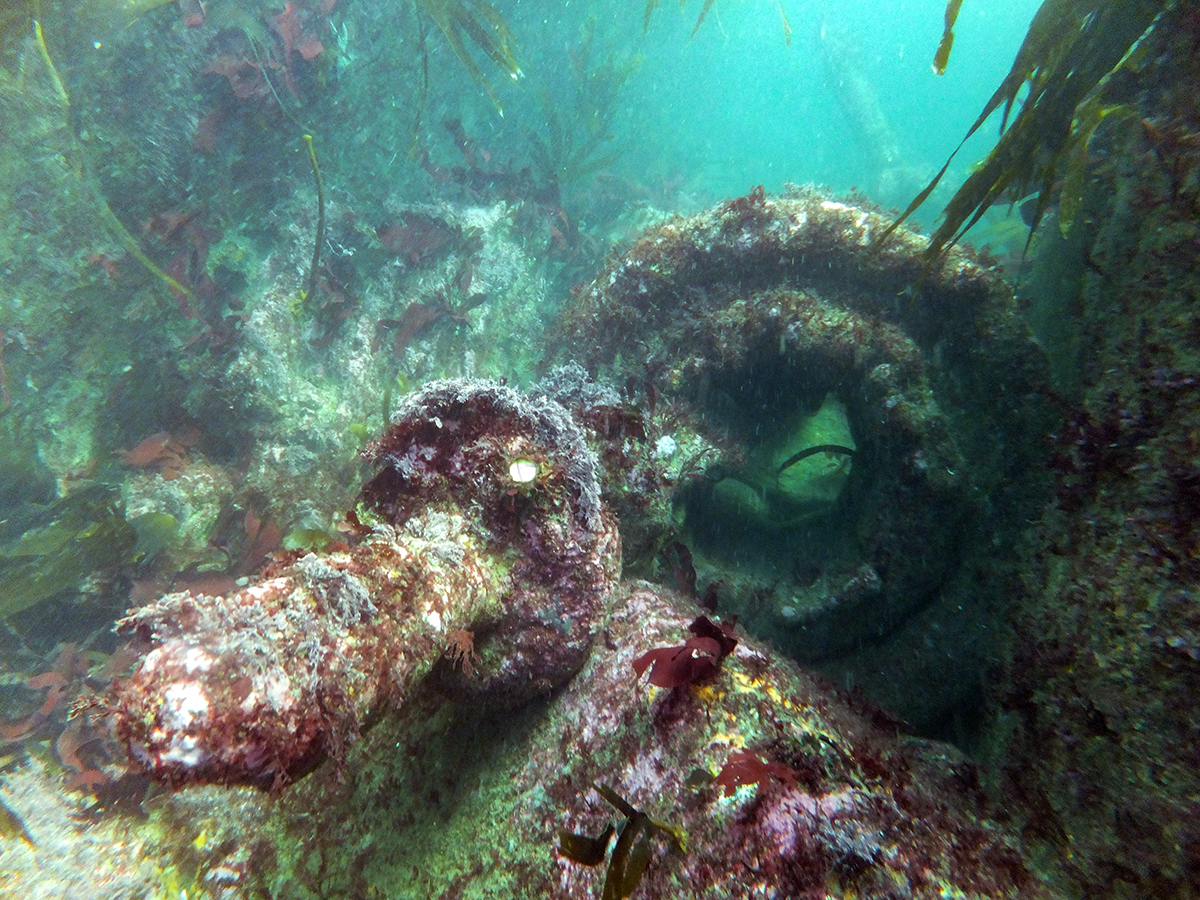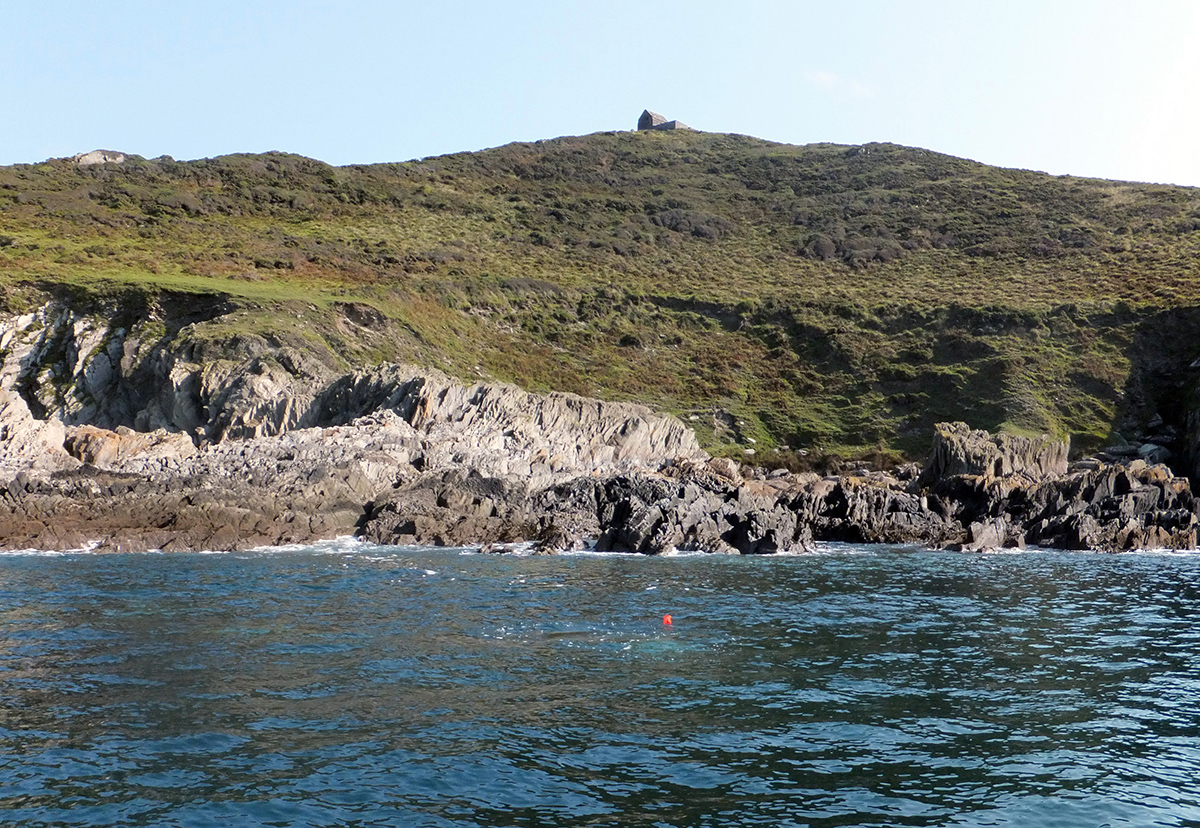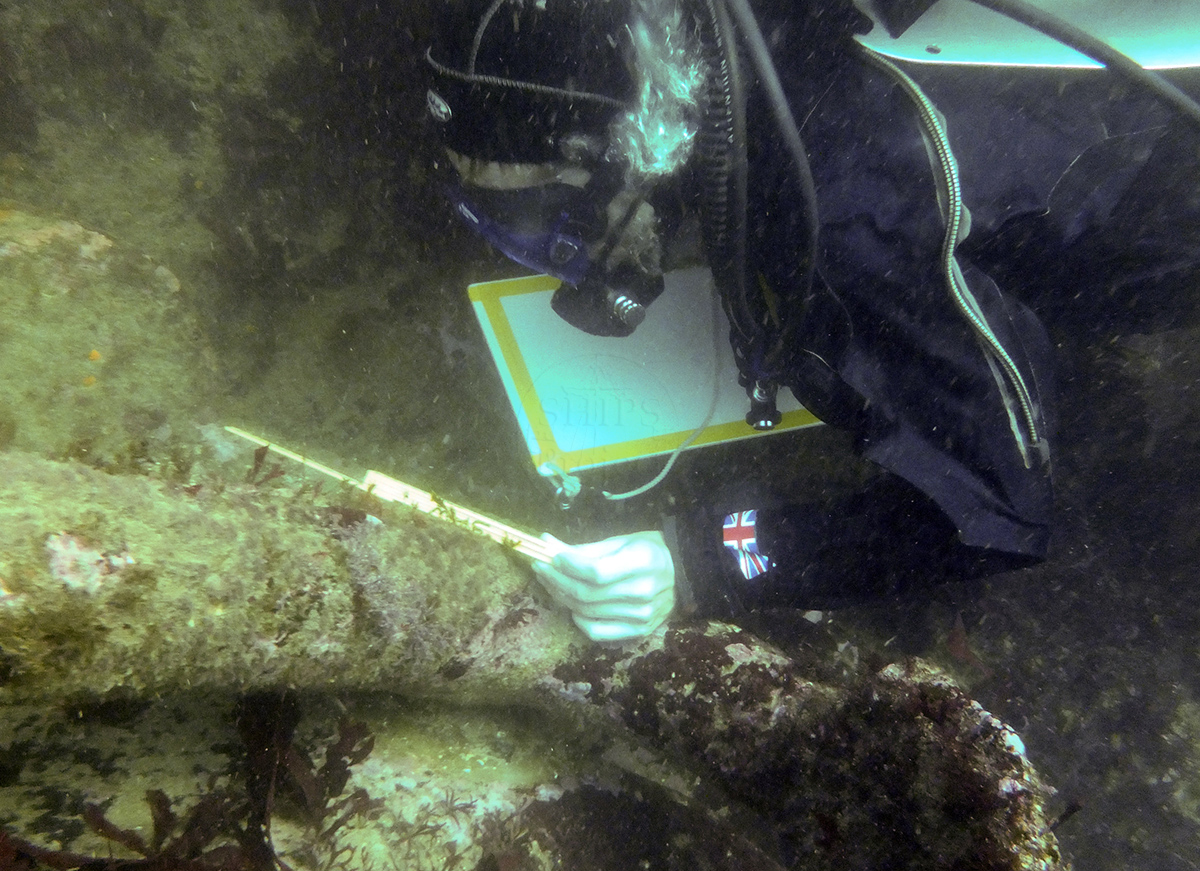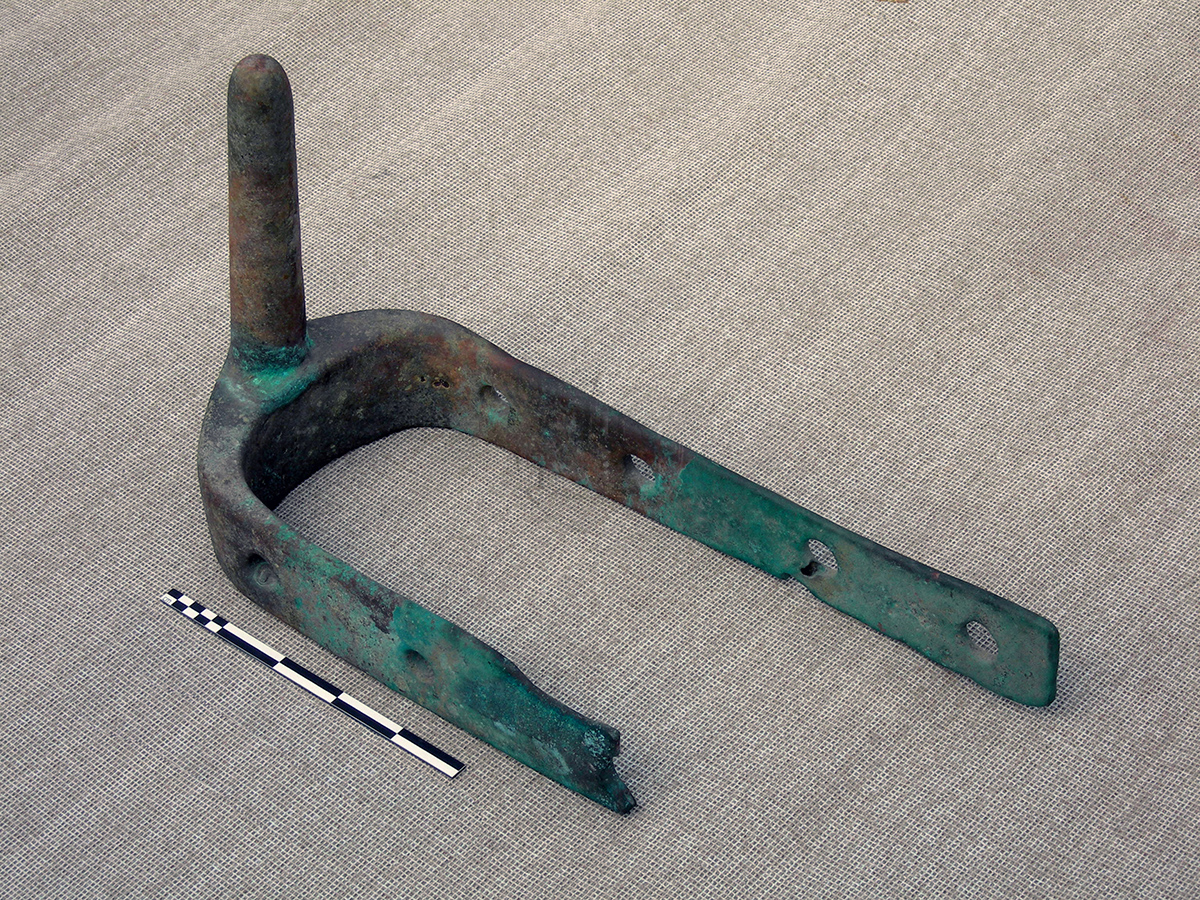Not Set
The Greek brig Taxiarchos ran into Rame Head at high speed in thick fog in January 1843.
Type
Greek brig
Location
Rame Head
History
The Taxiarcos was a 300-ton Greek brig (a sailing vessel with two square-rigged masts) and just after midnight on 27 January 1843 she ran straight into the south-west corner of Rame Head carrying a cargo of bones to Hull. It was reported in contemporary newspapers that the pilot that was picked up at Falmouth was below decks and not on watch at the time of the accident, but he had given instructions for the vessel to be steered southeast before he left the deck. Some mistake led to the opposite course being steered and in thick fog, the wind behind them and even the studding sails set the vessel hit the shore before the crew knew what was happening and ended up high and dry. No lives were lost and only one man was injured; the crew of 14 scrambled ashore and sheltered in Rame chapel overnight despite offers from the locals for proper accommodation. The vessel broke up quickly where she lay and were scattered on the seabed close inshore all around Rame Head. The cargo of bones was lost to the sea but a small portion of the vessel’s stores were saved and sold and the money was used to pay for the crew to live in a public house until they were repatriated. A box containing money and valuables that was supposed to have been owned by the master of the Taxiarchos was found off the Yealm a day later. Since she was a relatively new vessel, the loss was felt to be very severe and the British pilot was heavily reprimanded in local newspapers, the Herald even suggesting that he should obtain a copy of the Remarks on the Navigation of the English Channel!
The remains of the ship were rediscovered in the summer of 1982 by local Plymouth diver and photographer, Dave Peake. While snorkelling around the rocky headland at Rame, Peake noticed an old round crown anchor though the kelp, it was badly worn and partly buried, but unmistakably an anchor. He then spotted two more anchors lying about 5m apart in a nearby gully, both larger than the first, these anchors measured 2.5m in length and had large arrow-shaped flukes. Peake noted that the surrounding seabed was strewn with other iron wreckage including winch gear, iron spindles and drums so he presumed that after the ship ran into the rocks, the bow settled and rotted away, thus leaving the foredeck gear and anchors. We now know that the ship broke up shortly after it sank leaving just the iron and brass fittings on the seabed.
Eleven years later, Peake returned to the site with Paul Bailey and Alan Down, both members of the Nautical Archaeology Society, to see what else could be found there and it was then that they discovered the ships bell in amongst the shingle. Unfortunately, after over a century in the high energy environment off the headland the bell no longer bore the name of the vessel from which it came and a hole had been worn right through on one side. However, it was determined that the bell and anchors most likely belonged to the same ship as they were so close together, Peake started to research the wrecks on Rame Head and came to the conclusion that he had found the brig Taxiarchos.
A copper-alloy rudder pintle has been recovered off Rame Head (09A03) ![]() in the same area as the anchors and bell and it is suggested that this object also belongs to the Taxiarchos.
in the same area as the anchors and bell and it is suggested that this object also belongs to the Taxiarchos.
Location and Access
The site is best reached by boat but can also be reached by hiking down the hillside from Rame Head. The anchors and iron fittings lie very close inshore at the bottom of a gully running east-west in 5m of water at low tide. The site is very scenic, deep gullies with a shingle seabed and topped with kelp are a haven for fish and crabs, and on a bright day with good visibility is a great place to take photographs.
By boat the site should be dived at high water, the seabed rises steeply to Rame Head so the boat can be brought quite close in, but an echo sounder must be used to check the depth under the keel when approaching the site. Only dive this site in calm conditions and preferably with only gentle winds from the north, the site is completely exposed to the south and any waves or swell make diving conditions unsuitable.
Last updated 27 Jan 2024
Information
Type:
Brig
Date Built:
Unknown
Date of Loss:
1843
Manner of Loss:
Wrecked
Outcome
Broke up, abandoned
Builder:
Unlknown
Official Number:
None
Length
Unknown
Beam
Unknown
Draught
Unknown
Construction
Timber, carvel
Propulsion
Sail
Tonnage
300 tons
Nationality
Greece
Armament
None
Crew
14
Master
Captain Vasiopula
Owner
Unlknown
Reference
None
.
Not Set
Leave a message
Your email address will not be published.
Click the images for a larger version
Image use policy
Our images can be used under a CC attribution non-commercial licence (unless stated otherwise).


